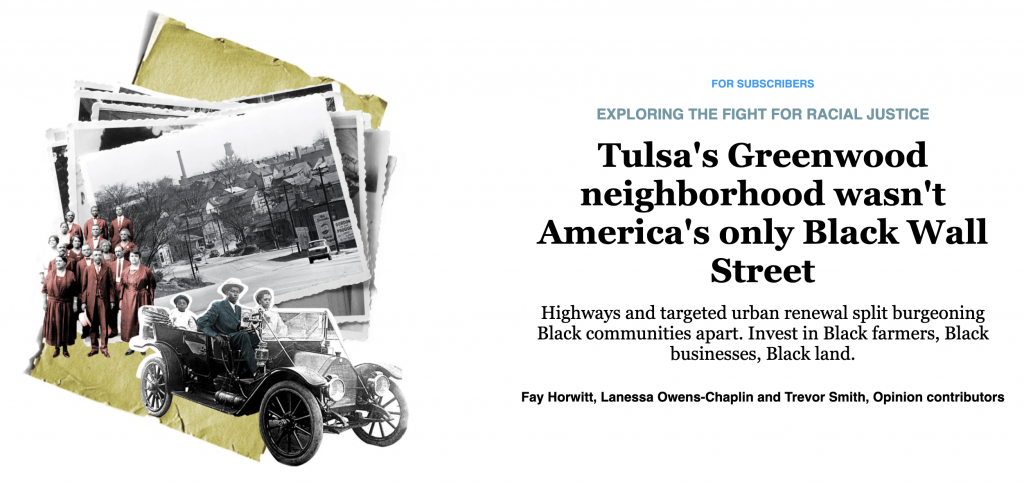Tulsa’s Greenwood neighborhood wasn’t America’s only Black Wall Street
“On this centennial of the brutal Tulsa riots, let’s remember other cities where Black wealth was decimated. In building the future of Black wealth, it’s important that we ground it in the history of its destruction.”
– Fay Horwitt, Lanessa Owens-Chaplin, and Trevor Smith
How many Black Wall Streets were there? What can we learn from their successes? And what policies are needed to repair, replicate, and rebuild wealth in Black communities?
Trevor Smith, program associate for Inclusive Economies at the Surdna Foundation, Fay Horwitt, president and CEO of Forward Cities and Lanessa Owens-Chaplin, assistant director of the Education Policy Center at New York Civil Liberties Union explore these questions in a recent USA Today opinion piece (excerpt below).

Pop culture has made Tulsa, Oklahoma, and the violence that destroyed its Greenwood community the center of conversation in ways that it never has been before.
The HBO series “Watchmen” kicked off with a vivid re-enactment of the massacre. The comic book series “Bitter Root” features the massacre as its heroic characters fight racism.
But Greenwood wasn’t the only Black Wall Street in America, and mass violence wasn’t the only means of wiping them out. Urban renewal and redlining tore apart many Black neighborhoods, along with their promises of progress and economic freedom.
Keep Reading on USA Today (Subscription required)
Article Highlights
- Explore how centuries of racial violence, displacement, segregation and a lack of investment have made the idea of a Black Wall Street – where businesses and entrepreneurship can thrive and money can continue to support it – a near impossibility.
- Take a look at three Black Walls Streets that were ripped apart by urban renewal and red-lining- Durham, North Carolina’s Hayti community; Richmond, Virginia’s Jackson Ward; and Syracuse, New York’s 15th Ward.
- Examine the three pillars of success of Black Wall Streets: the infusion of institutional capital, place-based clustering of Black-owned businesses, and the intentional reinvestment of Black wealth back into the Black community.
- Consider policy recommendations to repair, replicate and rebuild wealth in Black communities.

